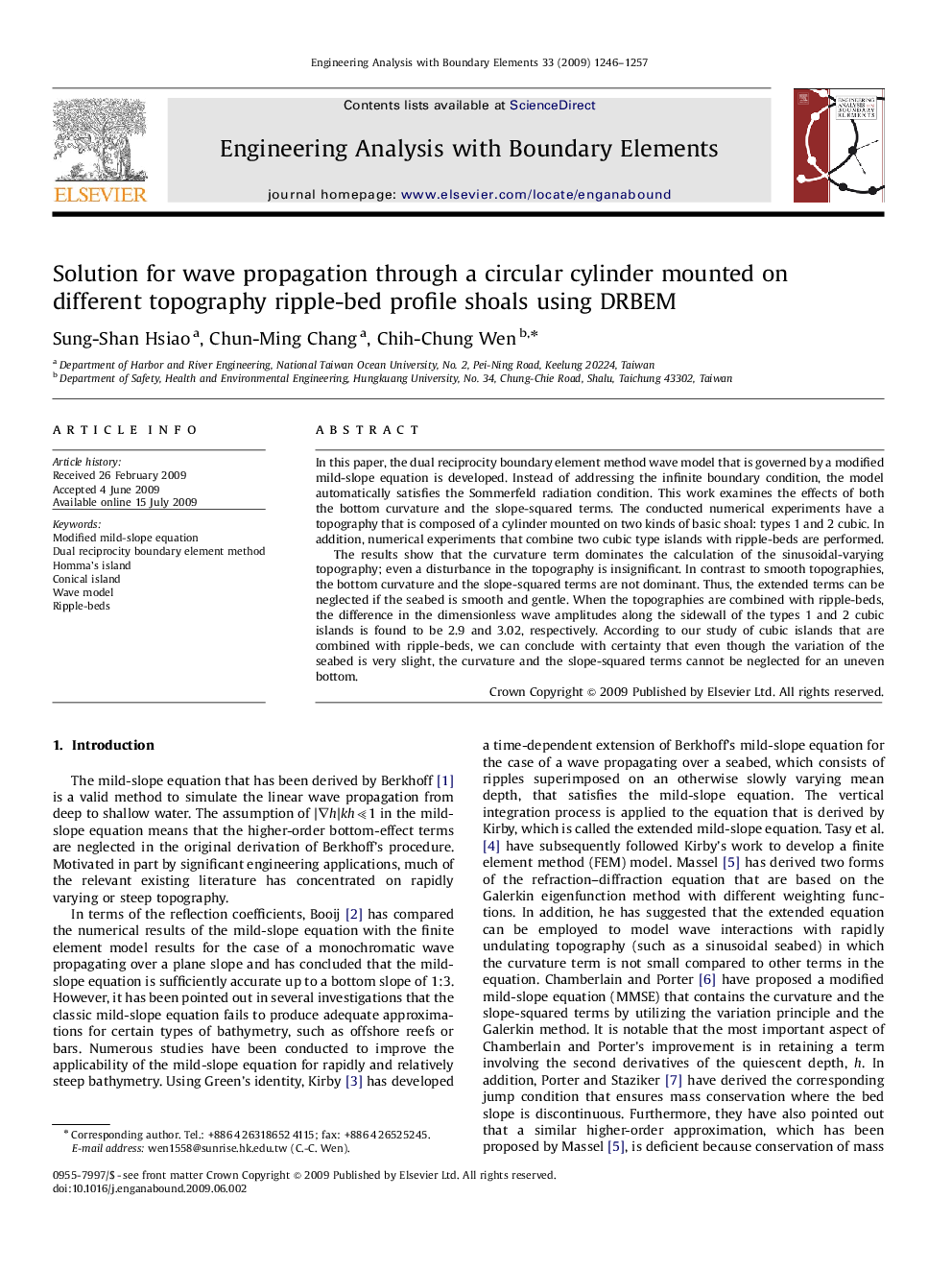| Article ID | Journal | Published Year | Pages | File Type |
|---|---|---|---|---|
| 513358 | Engineering Analysis with Boundary Elements | 2009 | 12 Pages |
In this paper, the dual reciprocity boundary element method wave model that is governed by a modified mild-slope equation is developed. Instead of addressing the infinite boundary condition, the model automatically satisfies the Sommerfeld radiation condition. This work examines the effects of both the bottom curvature and the slope-squared terms. The conducted numerical experiments have a topography that is composed of a cylinder mounted on two kinds of basic shoal: types 1 and 2 cubic. In addition, numerical experiments that combine two cubic type islands with ripple-beds are performed.The results show that the curvature term dominates the calculation of the sinusoidal-varying topography; even a disturbance in the topography is insignificant. In contrast to smooth topographies, the bottom curvature and the slope-squared terms are not dominant. Thus, the extended terms can be neglected if the seabed is smooth and gentle. When the topographies are combined with ripple-beds, the difference in the dimensionless wave amplitudes along the sidewall of the types 1 and 2 cubic islands is found to be 2.9 and 3.02, respectively. According to our study of cubic islands that are combined with ripple-beds, we can conclude with certainty that even though the variation of the seabed is very slight, the curvature and the slope-squared terms cannot be neglected for an uneven bottom.
